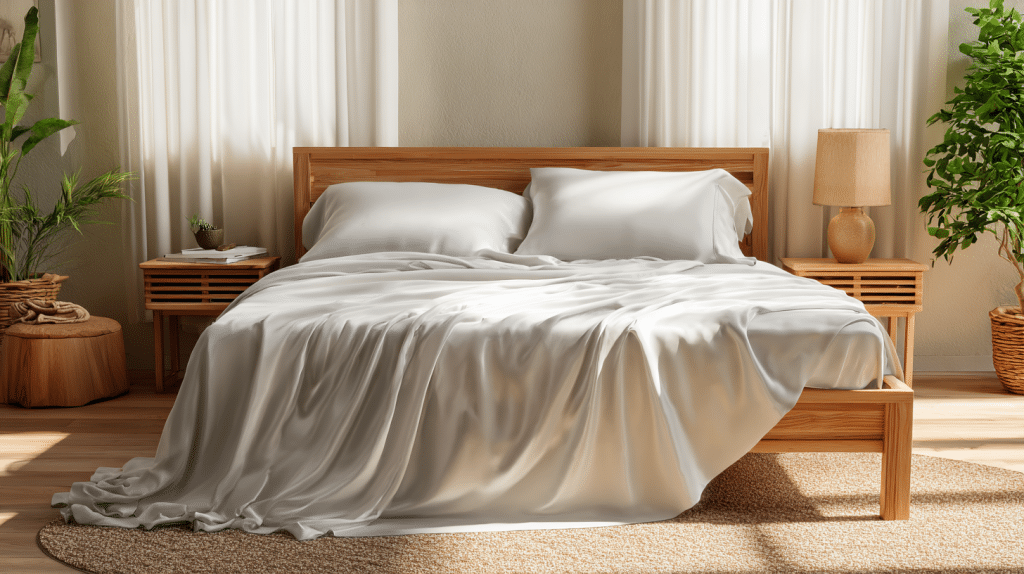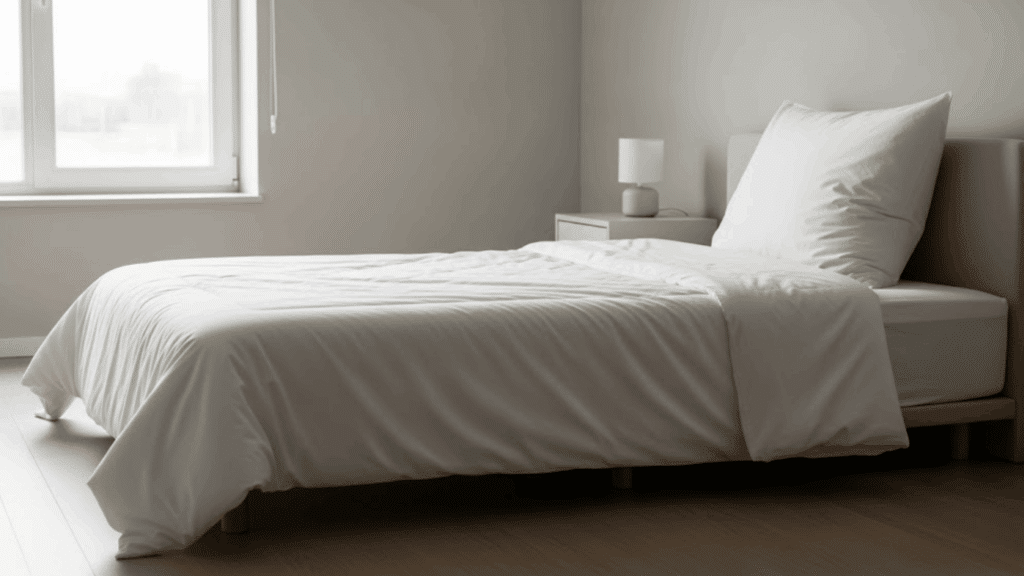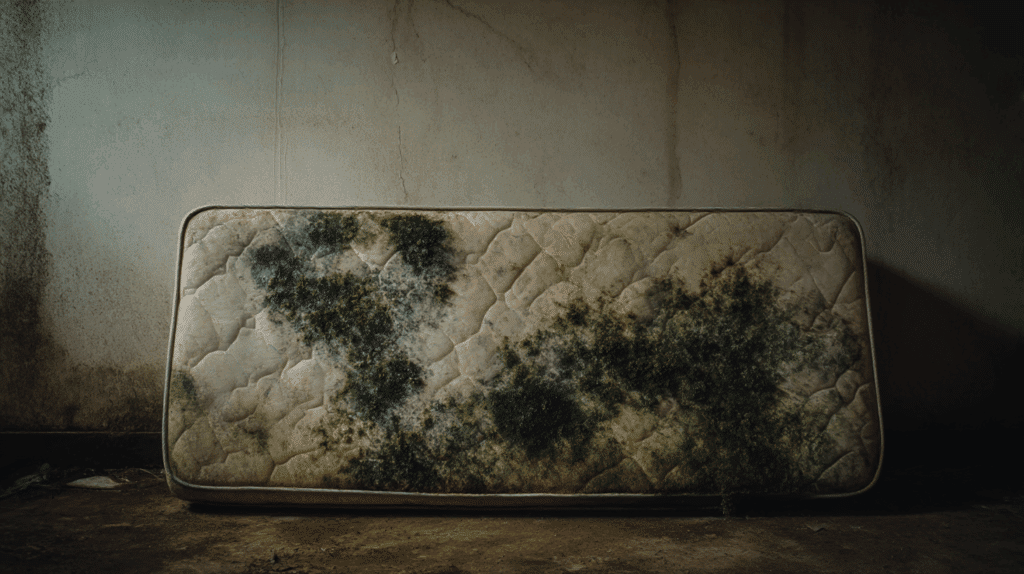Pilling is one of the biggest concerns when shopping for new bed sheets. These tiny fiber balls that form on fabric surfaces can make your bedding feel rough and look worn out quickly.
Many people wonder if bamboo sheets are prone to pilling like other materials.
Understanding how pilling affects bamboo bedding can help you make better buying decisions and keep your sheets looking great.
Quality bamboo sheets are generally more resistant to pilling than cotton or synthetic alternatives, but proper care still matters.
This guide will explain everything you need to know about bamboo sheet pilling.
You’ll learn what causes it, how to prevent it, and whether bamboo is truly better than other materials for long-lasting comfort.
What Is Pilling? Why Does It Matter?
Pilling happens when tiny fibers break away from fabric and tangle together into small balls.
These pills stick to the surface of your sheets, creating a bumpy, rough texture that feels uncomfortable against your skin.
Pilling affects both the look and feel of your bedding. Sheets with pills appear old and worn out, even if they’re relatively new. The rough texture can also disrupt your sleep comfort.
Beyond comfort issues, pilling can indicate poor fabric quality or improper care. Understanding why pilling occurs helps you choose better sheets and maintain them properly for longer-lasting softness.
Are Bamboo Sheets Prone to Pilling?
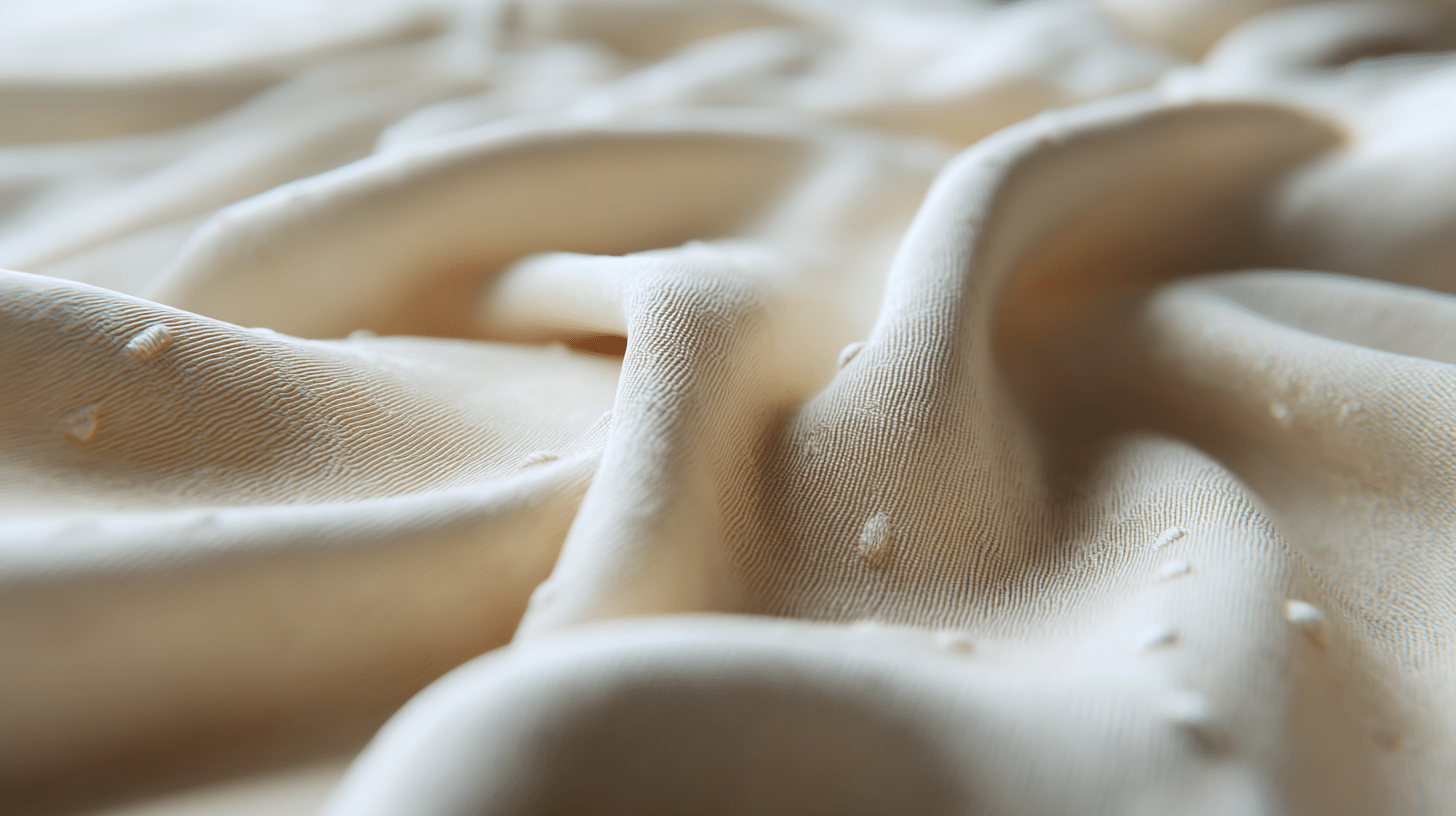
Bamboo sheets are generally less likely to pill compared to cotton or synthetic materials. The long, strong fibers in quality bamboo fabric create a smooth surface that resists pill formation.
Tight weaves in bamboo sheets also help prevent fibers from breaking loose.
However, not all bamboo sheets are created equal. Lower-quality bamboo bedding or sheets that aren’t cared for properly can still develop pills over time.
The manufacturing process and fiber treatment play important roles in the final quality.
When compared to cotton and polyester, bamboo has natural advantages. Bamboo fibers are naturally longer and stronger than many cotton varieties, making them more resistant to the friction that causes pilling.
What Causes Bamboo Sheets to Pill?
Several factors can cause even bamboo sheets to develop pills over time. Understanding these causes helps you choose better products and avoid common mistakes that lead to pilling.
1. Fiber Quality and Length
Short or weak bamboo fibers break more easily during washing and use. Chemically treated fibers that have been damaged during processing are also more prone to pill formation.
High-quality bamboo uses long-staple fibers that stay intact longer. Premium bamboo processing preserves fiber strength and reduces the likelihood of surface damage.
2. Weave and Thread Count
The way bamboo sheets are woven affects their pilling resistance significantly. Tighter weaves hold fibers more securely, while loose weaves allow more movement and friction.
Very high thread counts can sometimes backfire by cramming too many weak fibers together. Moderate thread counts with quality fibers often perform better than extremely high counts.
3. Friction and Washing Habits
Rough washing cycles, hot water, and harsh detergents can damage bamboo fibers and cause pilling. Using fabric softeners or bleach can also weaken the fibers over time.
High-friction areas like foot zones are especially vulnerable to pill formation. Aggressive washing is one of the fastest ways to create pills on any fabric.
4. General Wear and Use
Areas of higher contact and movement naturally experience more pilling over time. Foot zones, edges, and frequently touched areas show pills first due to constant friction.
Body oils and skin contact can also contribute to fiber breakdown in these high-use zones. Regular rotation and proper care help distribute this wear more evenly.
Note: Most pilling issues with bamboo sheets stem from improper care rather than inherent fabric defects.
How Does Pilling Affect Bamboo Sheet Quality & Durability?
Pilling changes how your bamboo sheets feel and look, but it doesn’t always mean the sheets are poor quality.
Some pilling can occur even with premium bamboo bedding if it’s subjected to rough handling or improper care.
The main impact of pilling is comfort. Pills make sheets feel rougher and less smooth against your skin.
This can affect sleep quality, especially for people with sensitive skin who notice texture changes easily.
High-quality bamboo sheets that pill minimally can still last for years with proper care. The underlying fabric structure remains strong even if some surface pilling occurs. Premium bamboo maintains its durability and most of its softness despite minor pilling.
How Do Bamboo Sheets Compare to Other Fabrics?
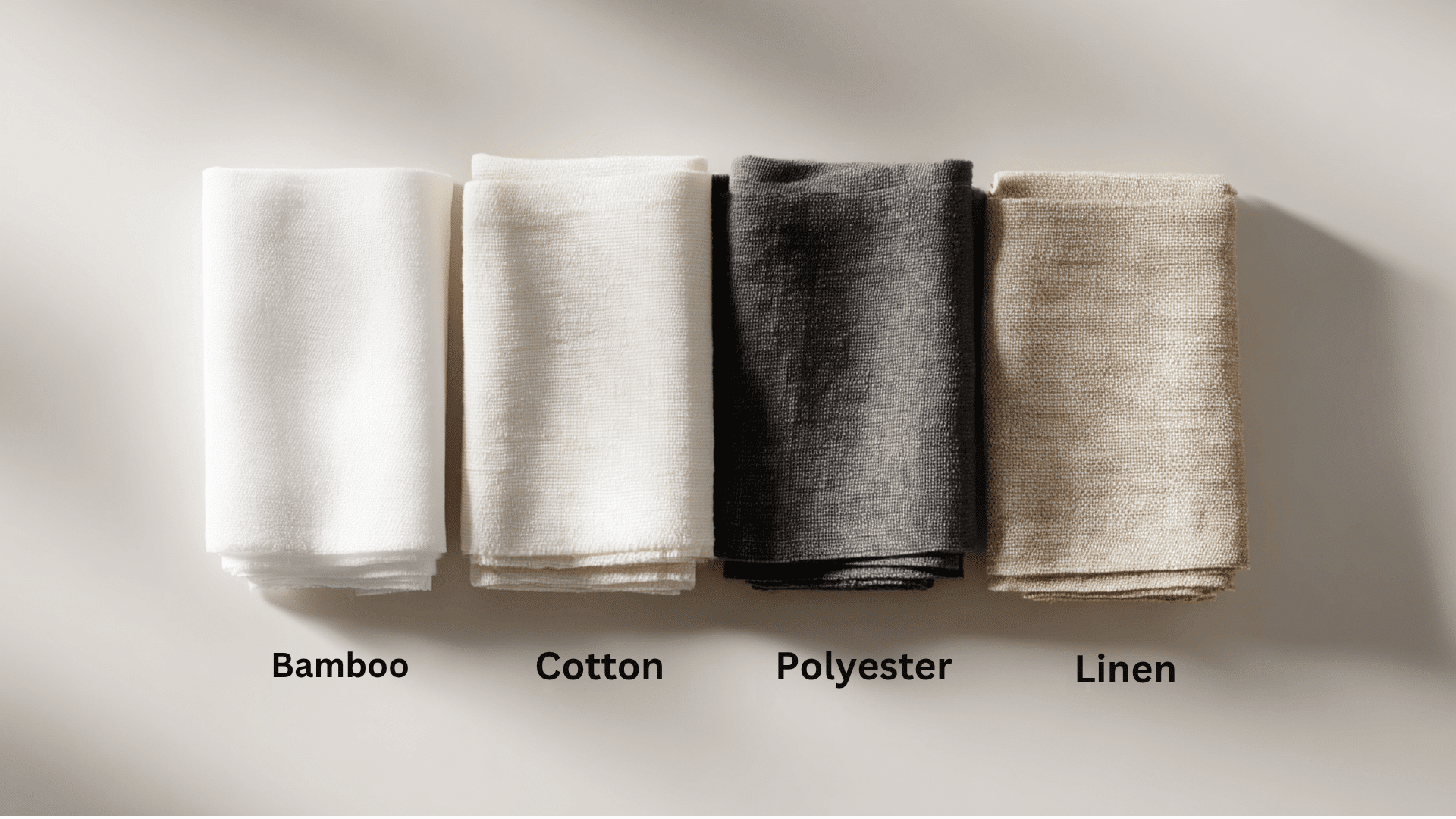
Different fabric types have varying tendencies to pill based on their fiber structure and manufacturing.
This comparison shows how bamboo stacks up against other popular bedding materials.
| Material | Pilling Risk | Durability | Feel |
|---|---|---|---|
| Bamboo | Low (if high-quality) | High | Silky, soft |
| Cotton | Medium-high | Good (varies by quality) | Crisp to soft |
| Polyester | High | Durable, but pills often | Varies |
| Linen | Medium | Very durable | Crisp, softens over time |
Note: Bamboo’s natural fiber length and strength give it advantages over synthetic materials, while proper weaving techniques help it outperform many cotton varieties in pilling resistance.
Tips to Prevent Bamboo Sheets from Pilling
Taking proper care of your bamboo sheets is the best way to prevent pilling and maintain their soft texture. These simple steps can help your bedding stay smooth and comfortable for years.
1. Washing Guidelines
- Use cold water: Hot water can weaken bamboo fibers and increase pilling risk
- Choose gentle cycles: Aggressive washing creates friction that damages fibers
- Select mild detergents: Harsh chemicals can break down bamboo’s natural structure
- Avoid bleach and fabric softeners: These products can weaken and damage bamboo fibers
2. Drying Best Practices
- Air dry when possible: Heat from dryers can damage bamboo fibers over time
- Use the lowest heat settings: If you must use a dryer, choose the coolest temperature
- Don’t over-dry: Remove sheets while slightly damp to prevent fiber damage
- Shake out wrinkles: This helps maintain the fabric’s natural texture
3. General Care Tips
- Rotate sheet sets: Regular rotation distributes wear more evenly across your bedding
- Remove pills gently: Use a fabric shaver or pill remover for any pills that do appear
- Store properly: Keep sheets in a cool, dry place to maintain fiber integrity
What To Look For When Buying Bamboo Sheets
Choosing quality bamboo sheets from the start is your best defense against pilling. These factors help identify sheets that will stay smooth and comfortable longer.
Look for sheets made from 100% bamboo viscose, rayon, or lyocell rather than bamboo blends. Pure bamboo materials offer better pilling resistance than mixed fabrics that include synthetic fibers.
Pay attention to fiber quality and manufacturing details. Long-staple bamboo fibers create stronger, more durable sheets.
Moderate thread counts between 250-400 often perform better than extremely high counts that may use weaker fibers.
Research brands and look for quality certifications like OEKO-TEX or similar standards. Reputable manufacturers invest in better processes and materials that result in more durable, pill-resistant bedding.
Real User and Expert Experiences
Many bamboo sheet users report minimal pilling even after months or years of regular use. Proper care and quality products seem to be the key factors in these positive experiences.
“I’ve had my bamboo sheets for over two years now and they still feel as smooth as the day I bought them. I wash them in cold water and air dry, and there’s absolutely no pilling. Best bedding investment I’ve made.” Sarah M., verified customer review
Consumer reviews frequently mention that high-quality bamboo sheets maintain their softness and smooth texture much longer than expected.
“As someone who’s tested hundreds of sheet sets, I can say that quality bamboo consistently outperforms cotton and synthetics for pilling resistance. The key is buying from reputable brands and following proper care guidelines.” Mark Thompson, bedding industry expert
However, some complaints do occur with lower-quality bamboo products or when sheets receive rough handling.
These experiences highlight the importance of choosing reputable brands and following proper care guidelines for the best results.
Conclusion
High-quality bamboo sheets are naturally resistant to pilling thanks to their strong, long fibers and tight weaves.
While no fabric is completely immune to pilling, bamboo performs better than many alternatives when properly made and cared for.
Gentle washing, proper drying, and regular rotation help preserve the smooth texture that makes bamboo bedding so appealing.
With the right approach, your bamboo bedding can stay soft, smooth, and pill-free for years of comfortable sleep.
Share your experiences and questions in the comments below to help others make informed decisions about their bedding purchases.

